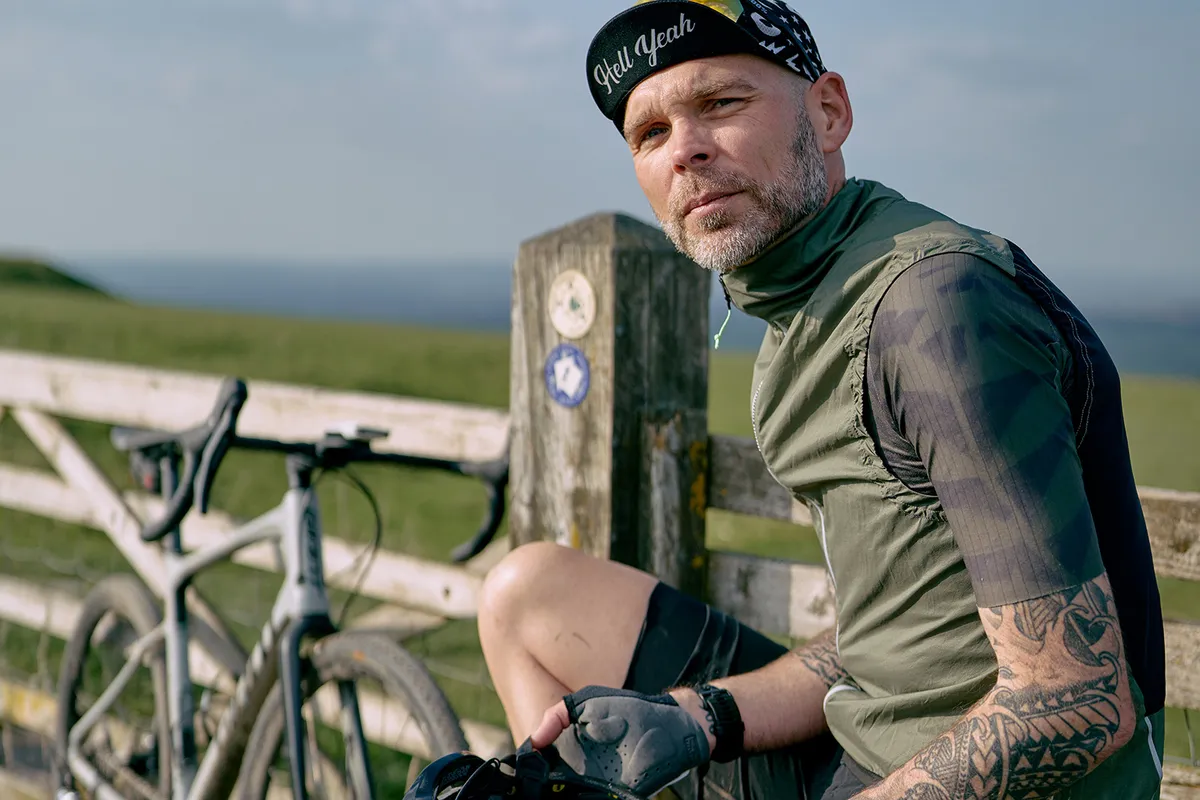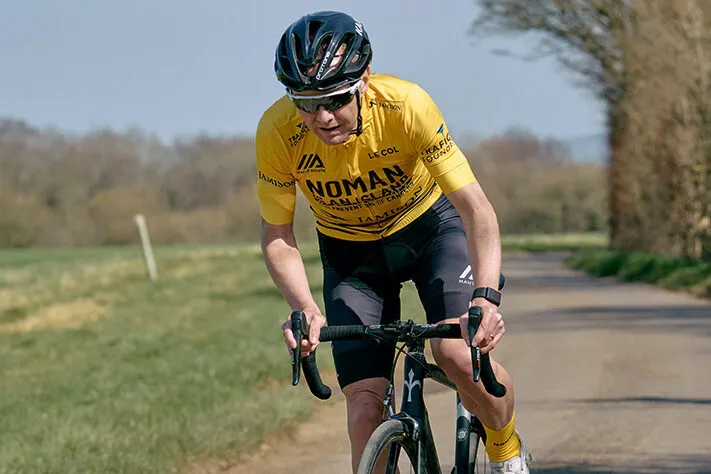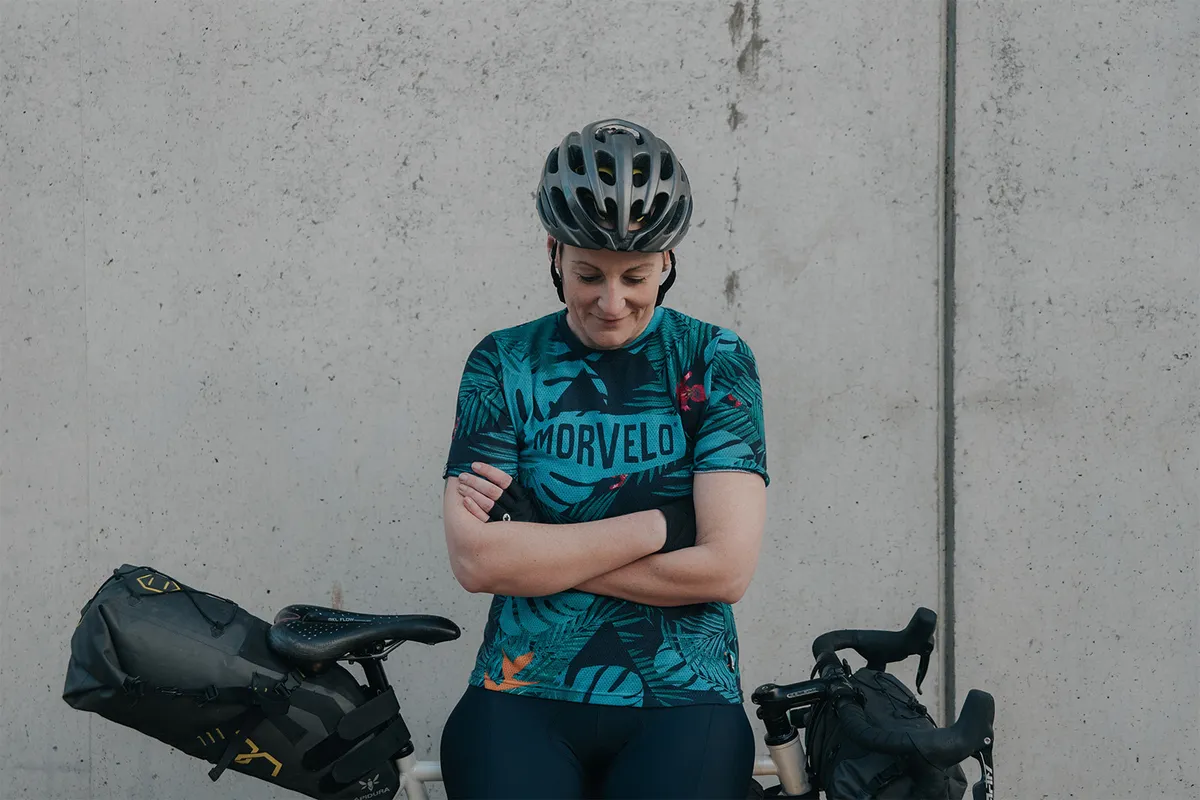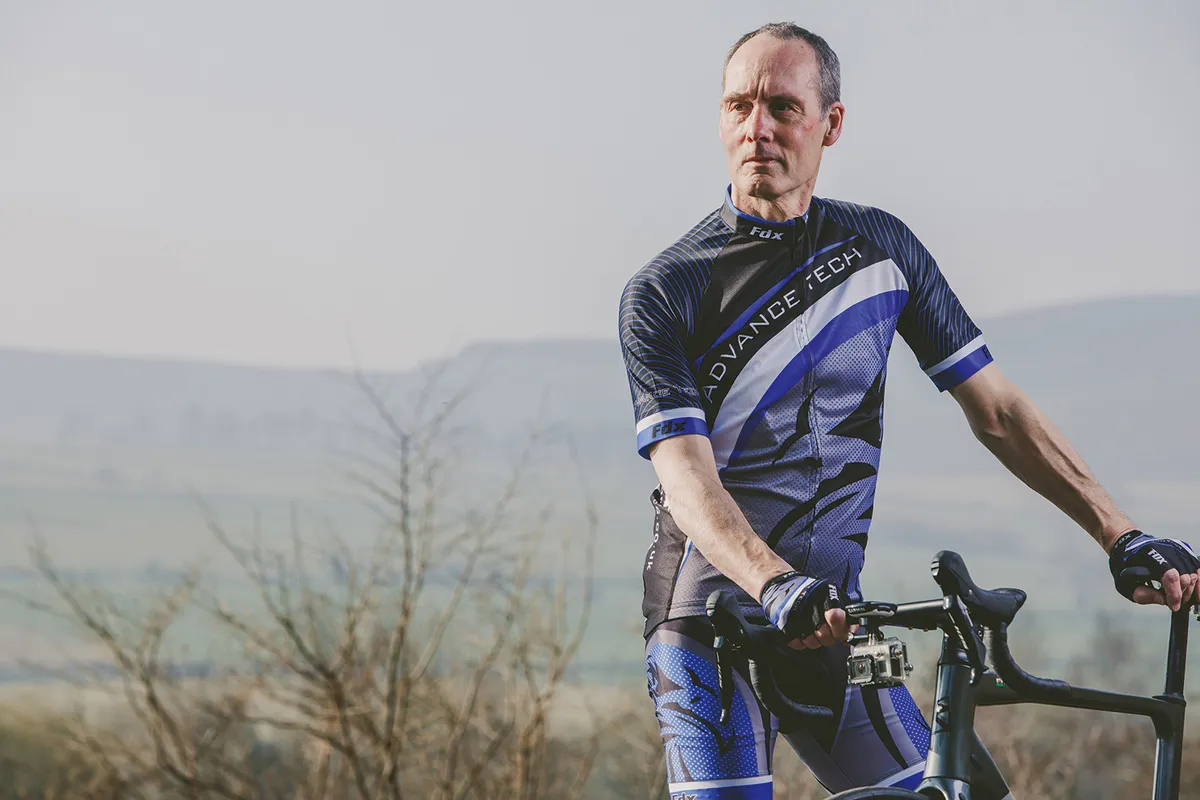Being diagnosed with a chronic or terminal condition is for most people a life-changing experience. However, for some, cycling can be equally transformative, bringing a range of physical and psychological benefits, improving mental health and providing an escape from otherwise devastating symptoms.
The four cyclists below have each been presented with hugely challenging circumstances, suffering from extreme pain, crippling fatigue and in one case coming to terms with a diagnosis of incurable cancer.
However, these inspiring individuals have continued to ride bikes throughout their respective experiences of chronic illness, unlocking the enormously positive physiological and emotional effects cycling can deliver.
Whether it's the surge of confidence that can come from conquering epic multi-day challenges, the social and fitness upsides of cycling, or even as a method of alleviating debilitating physical symptoms, riding bikes can change your life.
This feature was originally published in issue 392 of Cycling Plus magazine. Words by Anna Gardiner.
Steve Gotobed
Riding with MS

It’s fair to say that cycling has saved Steve Gotobed, 45 and the former senior art editor of our sister magazine Cycling Plus, from losing the ability to walk.
Diagnosed in 2007 with multiple sclerosis (MS) – a condition affecting the nerves, spinal cord and communication to the brain – Steve was told bluntly he’d be in a wheelchair within 10 years.
Although he’d been sporadically active beforehand, he was sceptical of throwing himself into any sort of physical training following his diagnosis.
Four years on, Steve was still coming to terms with the news. “I struggled to find ways to manage symptoms, was piling on weight and felt like I’d no control over my body. Then a friend roped me in to running a trail race, followed by a half-marathon. I realised the enormous positive physical and mental effects that exercise had on me, and that I didn’t need to be defined by my condition.”
MS is different for everyone who suffers from it. Steve’s own symptoms often include a debilitating feeling of “pins and needles meets sunburn”, and numbness down his left-hand side.
Steve describes it as akin to how your arm or foot feels after lying asleep on it and then immediately trying to use it.
“Running with this sensation is far from easy, as there’s no feeling of contact with the ground, so I don’t experience any proprioceptive feedback,” he states.
After landing the Cycling Plus job in 2016, Steve had a fast introduction into the world of bikes, which opened up new possibilities for managing MS. The numbness and discomfort is less noticeable while cycling, and even dissipates it.

“Cycling, with lesser impact on my body, allows me to exercise even more than I did before my diagnosis, which is ideal, as the worst thing for this condition is inactivity. Being able to do sport daily makes me feel like I’m in control of my condition; although this might not be true of all MS sufferers, it’s definitely my experience of it.”
Steve rides solely for enjoyment and the therapeutic benefits rather than anything competitive. He put himself off long rides in 2017 after riding from London to Paris over three days with only six hours’ sleep a night and four weeks of training.
This wasn’t ideal – tiredness makes his symptoms worsen – and he lost sensation in his left hand for six months post-event. He now sees the bike as a tool of recovery; he can keep aerobic fitness without overloading his body if he sticks to manageable distances.
“Until now, I hadn’t told many people about my condition – the way that someone looked at me once made me feel like I was contagious – but after 14 years I’ve stopped worrying about people knowing,” he adds.
With the bike, Steve can exercise every day, always striving to push forward physiologically and psychologically, cycling in the face of MS.
Richard Butterfield
Riding with cancer

Richard Butterfield, 54, is used to discomfort. Riding the mountainous Haute Route Alps and Dolomites back-to-back is evidence of that.
So, while his oncology team raised an eyebrow or two at Richard choosing to commute the 50-mile round trip from his home in Trowbridge to Bristol daily for treatment, his family thought nothing of it. “It’s fair to say I am just a bit obsessed with cycling!” he says.
Richard was diagnosed with tonsil cancer in 2019. After his first assessment, his dedicated approach to training and racing saw him travel to France to compete in a gran fondo, shrugging off health concerns and making the most of the time away.
“I didn’t think to prioritise my health – and I really didn’t think it was cancer. I was about 5 per cent off my usual level, but had a great race, finishing sixth vet,” he recalls.
Yet it was cancer. On Richard's return, he underwent neck surgery and radiotherapy, and again he rode throughout that period of treatment, brushing off the fatigue caused largely by the radiotherapy.
“Being fit made a difference to my recovery from surgery and radiotherapy. Much of the advice around exercise in treatment assumes a sedentary lifestyle, but I was able to ride with the advantage of being a lifelong athlete.”
He planned events for the following year because treatment seemed successful. However, Richard started struggling on local routes. An annual lung-function test showed a marked reduction from previous years.
In March 2020, he learned that the cancer had spread to his lungs and was incurable. He was given a prognosis of 18 to 24 months to live, but was largely asymptomatic.
Living with a terminal diagnosis is obviously an extremely difficult thing for Richard and his family. Covid has made that even harder.

Richard is used to being able to travel freely through cycling, so the curtailing of freedom during lockdowns proved incredibly frustrating. In the periods when travel had been easier, he was keen to fill his boots, such as his visit to the Dolomites in July 2020.
On his return, he underwent chemotherapy, but continued to ride, carrying a portable infusion pump in his back pocket attached via a PICC line into his veins.
Fatigue was rife, and some days just making it out of bed was difficult, so his training was adaptable. However, training had to continue, providing a constant in a changing world.
He completed the Rapha Festive 500 in December 2020 and, for a while, it seemed his body responded well to treatment. “I don’t know what I’d have done without the bike,” he says.
In May 2021, as soon as travel restrictions lifted again, Richard visited Nice, riding every day while his health held, then crossed borders for the Haute Route Crans-Montana in the Swiss Alps.
During this period, however, Richard noticed difficulty with words and a cancerous brain tumour was found. He underwent an awake craniotomy.
Still, he couldn’t be kept down and just seven weeks later he was back in the saddle for a series of tough events: the Haute Route Alps and Dolomites back-to-back, then the Haute Route Ventoux later in the summer.
New treatment has meant life and cycling have become more restricted, but Richard continues to train for his next challenge, which is always on the horizon.
Richard’s raised over £16,000 for cancer charities. You can read more about his story on his blog.
Claire Davis
Riding with fibromyalgia

Claire Davis, 40, is a muscular 6ft with a Mohican haircut. She has, however, lived with fibromyalgia for many years.
Little is known about its cause, although it’s thought there’s an imbalance of chemicals within the body and a disruption of pain messages throughout the central nervous system.
Symptoms include widespread pain, fatigue, sleep issues and, often, associated mental and emotional distress.
More recently, Claire has also been diagnosed with Ehlers-Danlos Syndrome (EDS), a genetic condition that affects soft tissue.
Most days, she manages symptoms as varied as irritable bowel syndrome, widespread muscular pain, cluster headaches, dislocation of limbs and chronic fatigue.
Diagnosed with fibromyalgia 15 years ago, she was left to muddle along and rely on painkillers. She was initially nervous about exercise and didn’t know if she should push through the discomfort barrier.
However, she didn’t want to rely solely on prescribed analgesics, so she became more active. Slowly, she gained confidence to try different sports, including triathlon. Days when she felt too exhausted to run, she would go for a swim or a gentle cycle.
Claire soon found that exercising daily lessened the symptoms of fibromyalgia. Being active has had massive psychological benefits, too, and backs up a 2021 National Institute for Health and Care Excellence report that chronic pain conditions should be treated with exercise programmes, talking therapies and acupuncture, alongside medicated pain relief.
She also appreciated the sense of freedom that cycling brings and the opportunity to explore the wilderness of her home in Scotland. Her condition can make her feel isolated and alone, but with cycling she loves accessing remote areas.
If she is having a bad day, Claire will make sure she gets on the bike, and it’s often the solution.
“If you wake and feel exhausted, change your plans. Don’t throw the day away. Just cycle around the block, then the next village, then the next one,” she insists.
Claire finds cycling so beneficial that it’s at the heart of her two jobs: teaching Bikeability, a cycle skills training course, in schools during the week and running her own cycling guide business at the weekends.
She’s also taken up ultra-cycling. After a life-changing solo south-east Asian cycling experience a few years ago, she’s now training for the Trans Alba - a fearsome event covering more than 1,000 miles and 70,000ft of elevation, self-supported, around Scotland.
Training with her condition has in fact helped Claire: “I’m used to doing things when exhausted and experiencing pain daily. In ultra-endurance events, you have to learn to overcome those feelings to complete them anyway.”
Lockdowns have highlighted how important cycling is to manage her pain. Being less active meant she had to take more analgesics, oxygen therapy and injections for migraines.
But now she has the Trans Alba to train for in the build-up to her 40th birthday and enjoys the social life that her cycling brings. As Claire says simply: “Cycling makes me happy.”
Kevin Roberts
Riding with Parkinson’s

Kevin Roberts, 66, has always been fit and active. He played professional football for three years, and then semi-professional, before retiring from the sport at 34.
Exercise has always been a key part of Kevin's life, and he made it part of his work when he became a retained firefighter in his early 50s.
Although he commuted by bike, cycling for pleasure was never a feature of his life while he was able to keep fit playing golf and tennis.
Over time, Kevin noticed dexterity issues. He found it difficult to write, had ongoing pins and needles, and suffered from muscular aches and pains. Parkinson’s was the diagnosis, at the age of 57.
It’s a disease that attacks nerve cells in the brain, which leads to the reduction of dopamine. Dopamine plays an important role in regulating movement of the body and its loss causes stiff limbs, involuntary shaking and depression.
Parkinson’s is a progressive disease, but Kevin’s consultants are surprised at how well he is managing his condition.
Riding his bike, he believes, is the reason his symptoms are kept at bay. When he is on the bike, and for a period after, his symptoms disappear and he’s comfortable in his body.
He agrees that it doesn’t quite make sense that he loses his balance after walking a few hundred yards, but can comfortably cycle 25 to 30 miles.
One of the side effects of Parkinson’s is muscle wastage, so the constant resistance of pedalling is strengthening physically, as well as keeping neural pathways going.
Kevin finds that stress exacerbates his condition. He lives in beautiful, hilly Northumberland. Initially, the thought of battling hills along his routes would unnerve him and put him off heading out.
His symptoms would then spiral due to the double whammy of stress and lack of exercise.
So Kevin bought an electric road bike and his cycling and attitude have been transformed. His bike motor acts like a tail wind – it still needs pedal resistance, but he can now take on any hill on his route without worrying whether his muscles can take the load.
He loves the freedom and solitude of cycling, choosing to ride solo. Like other conditions, he doesn’t know how he will feel physically from day to day and would rather do as much or as little as he can than go on planned rides.
Sportives and other organised events hold little appeal because he feels the competitive nature and riding in big groups would cause too much stress and would make his symptoms worse.
Riding a bike for Kevin is all about physical longevity and the mindfulness that it brings. “The scenery, the relief from pain and discomfort – it’s so vital and, for me, feels better than any medication."
